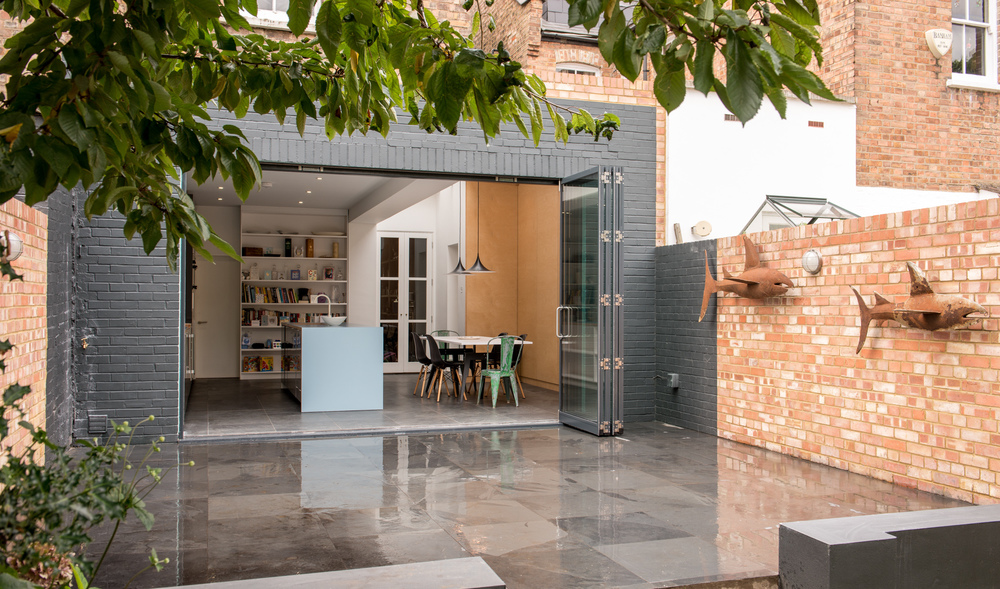How to increase the value of your home in the UK
1- Go for a loft conversion
The easiest way to get an extra bedroom and bathroom. Not particularly disruptive, either, as most of the work can be done from outside. The key thing is to make sure access to the loft is easy and that the conversion fits the rest of the house, rather than looking grafted on. You will have to strengthen the floor joists, which will raise the floor level, so make sure you leave yourself with sufficient ceiling height to stand up in. A loft conversion adds an average 12.5 per cent to the selling price10 Tips for buy to let success
2- Build a conservatory
Extending your living space is always a good idea, but the danger is that your conservatory ends up looking like something just bolted on the back. Make sure the conservatory matches the style of the rest of the house. Don’t make it seem as if it’s in any way separate, with its own entrance, for example. You can enhance the feeling of space and flow by installing the same flooring throughout your downstairs living area. It leads the eye on and ensures that the conservatory feels part of the rest of the house. A conservatory can add around 7 per cent to the value, while a full-blown extension adds 11 per cent.10 Kitchen Design Tips
3-Install a basement conversion
The most expensive form of extension: it costs £200 per sq foot to do the digging, and another £100 per sq foot to do the fitting out. So unless your house is worth £300 per sq ft, you won’t see your money back. It is also the most serious form of extension, as it is going to affect the structural load of your property. Not to be undertaken lightly, or without careful consideration, then. You will need to hire specialists to do the design and the installation, and you will almost certainly have to move out of the house for several months. That said, you can create fantastic spaces underneath your home, and extending your house like this means you can stay in it for longer, enjoy it more and sell it quicker when the time comes. The real value lies in increasing your living space.How to update your kitchen on a budget?
4- Get rid of the garage
And turn it into living space. The fact is, 90 per cent of British garages don’t contain a car. They are a wasted asset. To calculate value added, multiply square footage gained by local price per square foot.
5- Take aim at your target
Work out who is your most likely type of buyer and present the property accordingly. This will determine whether you present a spare room as, say, an office, a play room, a gym or a study.Why buy to let?
6 -Pave over the front garden
If you live in the countryside, and garden aesthetics are an important feature of the property’s presentation, keep the flower beds. But if you want to add value in an area where parking is at a premium, then it is concrete every time. You may need planning permission.
7- Paint the house
If you are selling, you have to get buyers through the front door, which means you need to have the outside as spick and span as possible. If nothing else, your house should at least look better than your neighbours’. Clean those dirty windows, clear the driveway, unblock the gutters.Unexpected costs of being a landlord
8- Change the windows
But only if they don’t match the house as it is now. I am a big believer that whatever you decide to do should suit the age and style of the original property. If it was meant to have wooden windows, then put wooden windows in. If metal, then put in metal. Otherwise, leave well alone.
9- Refurbish the front door
Does it look smart? If not, buy a new doorknob (£35), brass letterbox (£25) or a stainless steel house number (£5-£25). Just cycle around the area and took photographs of other people’s front doors. You get some great ideas that way.Tax digital for landlords
10 -Hang mirrors in the hall
The hall is the first thing the buyer sees, yet it is often narrow, cramped and full of prams, bikes and trainers. A mirror on either side of the wall makes it seem magically bigger.
11 -Concentrate on the kitchen
If you are only going to improve one room, make it the kitchen. This has now become the showpiece area of the home. We don’t just cook in it, we do homework in it, we watch television in it and hold dinner parties there. The number one priority is creating a handsome and efficient work surface and ensuring easy access between the three points of the kitchen triangle, that is, the sink, fridge and cooker (high street kitchen firms have got surprisingly good at drawing up designs). Install equipment that is as up to date as possible, so it won’t look outmoded in 10 years. And make sure the price bracket of your kitchen matches the price bracket of your house. There is no point putting a £25,000 kitchen in a £250,000 house; you won’t see your money back. Equally, put a £10,000 kitchen in a £1 million house, and you will drag down the value. Typically, a new kitchen will add 4.6 per cent onto the value.
12 -Knock down the walls
Those that aren’t load-bearing, anyway. Buyers are more interested in the amount of usable space, rather than the number of rooms.
13 -Do the bathroom next
This is the other room that has really taken off lately. The secret is to keep things simple. You don’t need to do a lot with the room, it’s all about the features that you put in, such as a set of new taps, a heated chrome towel rail, a big new shower head, a power shower, a glass screen or glass door instead of a shower curtain. A new bathroom puts 2.88 per cent onto the house value.
14- Put in central heating
If it’s not already there. You’ll spend £1,000-£3,000, but will add £5,000 to the value.
15- Don’t bother with the bedrooms
Apart from a few soft furnishings here and there. Just decorate them with neutral colours, keep them freshly painted to attract the best price.
16- Look above your head
You can never have too much storage space, and one of the best ways of increasing it is to use the ceiling voids.
17- Bring the garden into the house
Not literally, but make it accessible and enjoyable from the house. Glass doors are a good idea, as is outdoor lighting. View the garden as another room; install decking and you can add two per cent to the house value.
18- Apply for planning permission
Even if you don’t have the money to build an extension or a conversion, you’ll make money purely by having secured permission to do so: you’ll spend £1,000-£2,000 on survey, design and planning processing, but you’ll elevate your property into a higher league. It removes a big element of doubt from a buyer’s mind, if they know the council have already said yes to expansion.
19- Phone a friend
Having someone recommend a builder is like gold dust. Let’s face it, the odds of probability are heavily stacked against the builder-client relationship being a happy one. Building work takes time, it is expensive, it disrupts your house, so it is great when the home owner has good things to say about the builder at the end of the job. it’s not the building trade that nominates the builders, but the customers. That’s something special.
20 -Take a view on timescale
Get a big builder in and they will probably do the job quicker, but for a higher price. Hire a smaller builder and it will probably take longer, but be cheaper. You have to work out your own time-versus-money equation.
West London Property Networking
Please contact Pelin Martin to book a 30-minute free property consultation on


